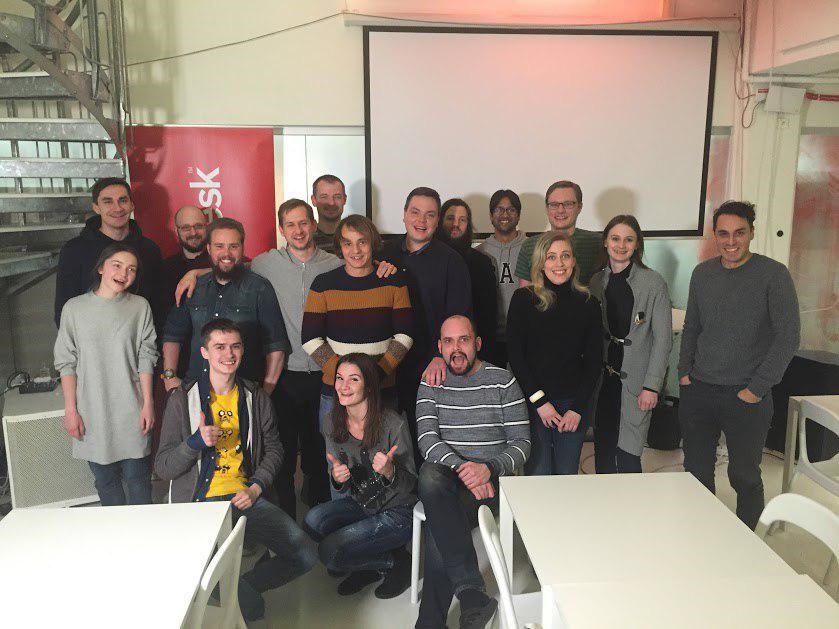
5 Things Your Outsourced IT Company Wish They Could Tell You
Editor’s note: This is a guest post by Pavel Obod, CEO of Sloboda Studio, a successful web development company located in Ukraine. Pavel shares his insights on what to keep in mind before starting a project with an overseas IT company.
1. Communication is Essential
Communication is everything. While a face-to-face kickoff is usually the best way to start off a new project, working with overseas clients doesn’t always allow for this. It’s important not to let distance get in the way of daily communication and we encourage our clients to communicate as often as possible using chat platforms (e.g., Skype, Slack) video (great for taking part in our daily standup meeting), emails, phone calls, and more.
A few months ago, we started a project with a Swedish freelancer marketplace for writers, based in Stockholm. In this case, we sent a team of 8 to their offices for a kickoff meeting. It was a great chance for our teams to get to know one another and we were able to discuss the main business objectives of the project, agree on the main tools to develop the app and discuss different approaches to tackling the project. Important issues were flagged from the beginning. For example, our internal coding policies were more stringent than those of the customer. In this initial kickoff, we had an opportunity to explain our rationale and come to an agreement in terms of how to move forward. When the distance is feasible, we aim to send an in-person team but we have also had much success managing completely virtual communications.
QUICK TIP: Make sure to have a comprehensive kickoff meeting to align expectations, share goals and start off with a strong approach to ongoing communications. Make sure to utilize all the tools you have in place to make sure that you’re communicating as often as possible with your team.


Our team in a customer’s office in Sweden
2. Adopt Your Remote Team
Communication is the first step to a successful overseas business relationship but taking that communication one step further, by getting to know your remote team on a personal level, will go a very long way. If I had to choose one success factor that really separates outstandingly successful projects from the rest it would have to be how well the client integrates their remote team. Excellent remote team integration has two parts: 1. Making an effort to get to know the team members and 2. Communicating your company’s vision so they feel part of something larger.
Get to know your team members, their backgrounds, hobbies, interests, habits, in the same way you’d get to know an in-house employee. This goes a long way. Keep your remote team in the loop when it comes to internal communications concerning the growth the company. At the end of the day, people are looking to connect to a company’s vision, regardless of where they are located.
Manage the relationship with your remote team and with the company’s management team, even if you don’t interface with management on a day-to-day basis. View this business relationship as a lasting partnership. Give feedback (what’s working, what can work better) and position yourself as a partner instead of just a strategic client. Provide reviews and job references on different platforms. These small acts will help to ensure that you get the most from our outsourced IT company.
QUICK TIP: Presents have a HUGE impact! Sharing company swag (promotional merchandise) can have a strong, positive effect on a remote team. Firstly, it’s a great way to show appreciation and encourage a wider sense of belonging. Secondly, it’s a great way to remind them of your brand and to create a positive association with your company.


Our developers visiting the Applift offices, one of our German customers
Integrating with an outsourced team can also go a step further. One of our UK customers offered equity to their remote team (developers and management), greatly contributing to the feeling of shared ownership over the product. A Russian client sent champagne and chocolates as a thoughtful gift for the New Year. Regardless the size of the gesture to encourage involvement and show appreciation, these acts make a big impact on relationship building with the team.
3. Stay Focused & Give Clear Instructions
We’ve established that communication is key, sharing your vision has a huge impact and small gestures of appreciation can go a long way. Where some companies go wrong, however, is to overload the team with too much extraneous information, in an attempt to keep the team engaged and motivated. Sharing your company and product vision with the team is essential but so is keeping your message focused. Too much detail can have the opposite effect. Keep your message clear, speak to your team about how they can apply themselves to help you execute your vision.
Remember that your remote IT team is made up of techies who aren’t versed in your business. The key to keeping them excited and engaged is to speak their language and communicate how their output impacts your business specifically and your industry as a whole (e.g., the impact on the end-user). Share the high-level vision but also focus on the relevant action items to keep your remote team focused on their contribution to your big picture.
QUICK TIP: Sharing the vision you have for your company or product is essential but go the extra step to explain how the team’s actions have a direct impact. The onus on giving focused instructions and feedback is on the client – it’s your responsibility to make sure that your remote team is connected to your business goals. This will change their experience from feeling like task rabbits to feeling like their work has a direct effect on your business success. In turn, this increases motivation and dedication.


Our map of customers on the wall at our office
4. Delegate Responsibility Smartly
Remember that not everyone on your remote team has the same skillset or job description. Many times, we assign a more experienced developer to serve as a dedicated Project Manager. In this capacity, this person serves are the main point of contact for the client in terms of staying on top of the project timeline and being responsible for absorbing all the information affecting your rollout schedule. Having a good line of communication with this person helps them to make the right management decisions based on changes and fluctuations that are affecting your business.
One of our Norway-based clients does a great job of communicating all important business-related updates directly to their dedicated Project Manager. By keeping her in the loop, she is able to make adjustments to workforce allocations on-the-fly, keeping the entire work process as agile and flexible as possible. From time to time, the client presents company results and a marketplace overview to the entire team, complete with stories “from the field”.
QUICK TIP: Make sure to have a dedicated Project Manager who can absorb more of the business-related details on a regular basis and make adjustments to the team’s output accordingly. Every once in a while, share the big picture with the entire team but save the details for your dedicated point person, giving them the freedom to delegate accordingly.
5. A Word on Working with Ukrainians
Ukrainian developers are extremely focused on technology. They are usually wrapped up in creating the best-engineered product and less on the purpose behind the startup’s MVP. (Remember, it’s your job as the client to make sure this connection is clearly communicated!) This is generally the case for any group of engineers but it’s important to keep in mind, nonetheless.
Language barriers are real. While most Ukrainians have a high level of English, small nuances in grammar can end up affecting the tone of the message, making the communication come across as rude or abrupt. For example, a Ukrainian developer might say “You must give us a more detailed task.” Instead of saying “It would be great to receive a bit more detail on this.” For a non-native English speaker, using the verb phrase “must give us” instead of “would be great to receive” might seem inconsequential. Therefore, it’s important to remember that even if the language chosen sounds rude, that’s not the intention. Ukrainians value politeness and good manners so it’s safe to assume that if something sounds rude, it’s the product of a language barrier and not a cultural barrier.
Also, cultural differences sometimes lead to a difference in how one might approach a problem. It’s completely acceptable in our culture to ask someone for their opinion. Most likely, however, if you don’t ask for their opinion, they will be too shy to share it themselves. So, if you’d like to understand the “why” behind something, definitely don’t hesitate to ask.
Building great products is always a journey. Working with overseas outsourced vendors provides many challenges as well as many opportunities. It works best when you have great communication, clear and focused instructions and feedback, and a strong foundation of trust and mutual understanding. Wishing you a lot of luck managing your remote IT teams!
Learn more on how you can easily pay your outsourced contractors using Payoneer!






